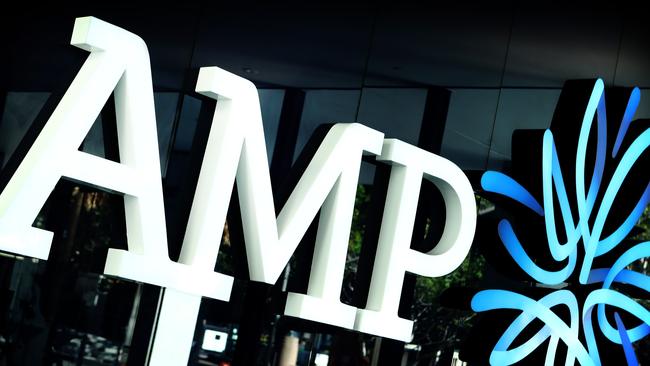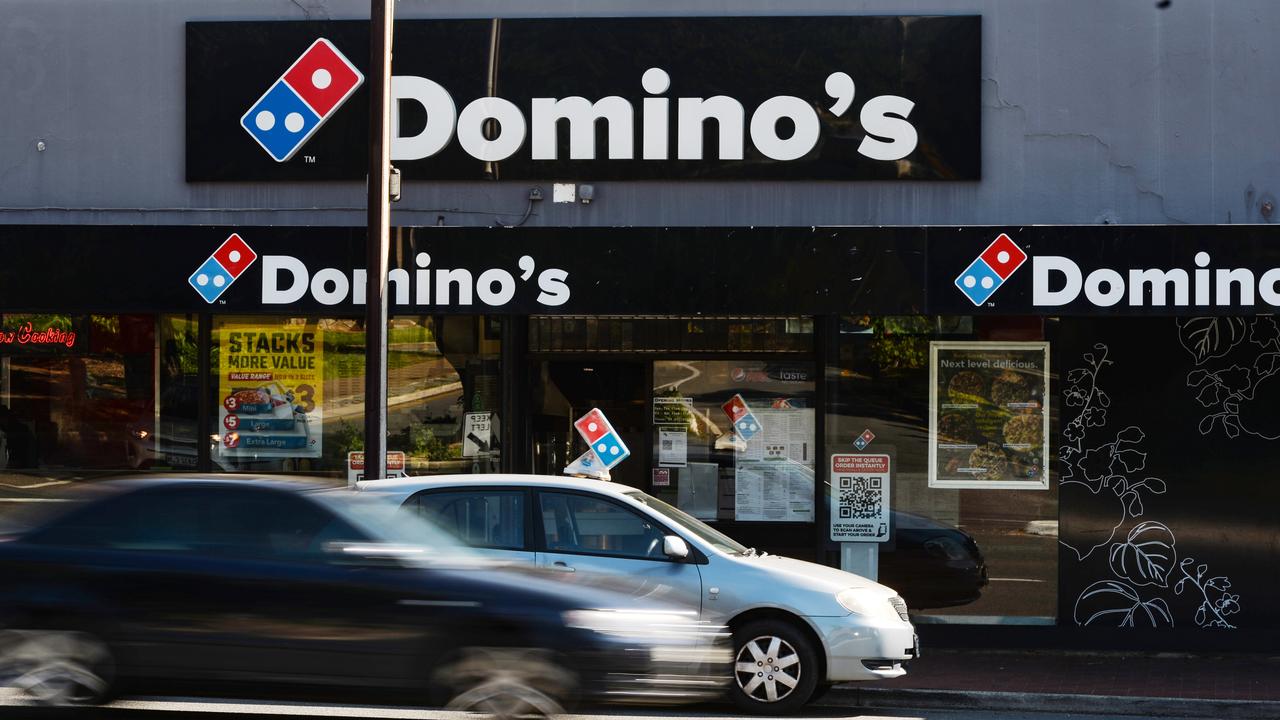Big lessons from the demise of small lenders
There are worrying signals for second tier banks that are now being forced to pay top rate for funding, making it harder to compete.

Business
Don't miss out on the headlines from Business. Followed categories will be added to My News.
The demise of mortgage lender Nano shows that even with some of the best technology in the world banking is all about funding.
The worrying signs for regional banks from Bendigo, Suncorp and Bank of Queensland is that funding markets are only going to get even tighter while global interest rates remain high, meaning they are having to pay up in order to lock in financing. Bigger banks still have a massive funding task but in the current risk averse markets their higher credit rating gives them the better funding deal.
Simply this makes it harder for smaller lenders to compete on pricing, particularly as the refinancing wave is about to hit. Profit margins are being crunched, even in the face of a refinancing wave with billions of dollars of fixed loans about to expire. These are some of the issues confronting the ACCC as it considers ANZ’s friendly $4.9bn buyout of Suncorp’s bank.
Nano, a non-bank lender, transferred its $400m mortgage book to AMP Bank and will pivot to focus on selling the technology behind its super-fast lending platform to allow other lenders to process fully automated loan approvals.
Since October AMP has been using Nano’s digital platform to process loans in under 10 minutes for customers looking to refinance. The close technology relationship of the two meant that it is expected to be a smooth transition for Nano’s home lending customers.
Nano was backed by some of the most experienced bankers in the business counting former Commonwealth Bank chief executive Ralph Norris, former National Australia Bank chief Andrew Thorburn and Carlyle Group’s Washington-based executive Martin Sumner but even this wasn’t enough to steer it through the funding crunch.
It stopped offering new loans last October as funding costs were soaring and weeks later quietly pulled a debt issue which was essentially the end of its lending business. However Nano was fortunate to have a strong technology business sitting behind the balance sheet. This makes it different from other neobanks such as Xinja, 86,400 or Volt Bank which have closed down or sold off.
Nano’s co-founder and chief executive Andrew Walker, a former top Westpac executive, said the long term strategy was always to be a pure play software provider but funding costs brought this forward.
“There were two main factors that drove the AMP decision. The amount of inbound interest we have seen in licensing our origination platform; and the cost of wholesale funding which were driving interest rate spreads to sub-economic levels,” Walker says.
“So, we pulled the strategic lever to focus purely on our SaaS business line, frankly, a few years earlier than planned”.
He says the pivot is consistent with its original mission to change the lending landscape using data and technology.
“We are very proud of the lending business we built utilising our global leading technology. Most importantly we are exceptionally grateful to our overwhelmingly supportive customers. These customers are going to a great home with AMP Bank who are an innovative and nimble competitor and a user of our origination platform,” he says.
Walker added “focus is key” in the start-up and technology worlds and Nano is looking to expand both here and offshore.
“Customers demand a better experience than the ones they are currently receiving and lenders need better technology to deliver these, that is the future for Nano”.
To illustrate the pricing gap, smaller banks are paying a significantly wider margin over the benchmark compared to majors to secure funding. On Tuesday Great Southern Bank, the former Credit Union Australia, paid 165 basis points above the benchmark 90-day bank bill for a $250m four year funding. The equivalent deal from the same bank was fetching over 155 basis points in November.
Commonwealth Bank earlier in January priced 3-year notes at a 90 basis point margin. CBA also secured $2bn of five-year bonds at a little over 110 basis points. In short Great Southern Bank is paying almost twice the amount to fund its mortgage book. Although it's a matter of time before the bigger banks start also playing in this market.
Regional banks have been countering this by offering better deals for savers on deposits, and this is proving more cost effective than paying a premium for short term funding.
Brokerage Macquarie estimates the funding task for Australian banks is between $31bn to $48bn this financial year. Commonwealth Bank has already locked in more than $18bn of this.
Macquarie Equities say wholesale funding is currently at the highest level in the last five years. As Australian banks have had to step up their issuances and conditions have tightened, the price of wholesale funding “increased materially” through 2022,” the brokerage says.
“We expect funding costs to remain elevated throughout 2023 and potentially increase from the current level”.
Nano also found its advantages were being eroded on another front. In the past year all the big four banks have moved closer to delivering a fully automated mortgage with Commonwealth Bank and Westpac the first of the big players to market with a home loan in less than 10-minutes. ANZ is aiming to hit the 10 minute mark this year as it continues to overhaul its technology, while NAB currently processes around a third of loans in under an hour and has already seen some home loans unconditionally approved in 15 minutes.
For AMP the boost to its mortgage book is a small but significant step. After nearly three years of turmoil, a near implosion CEO and board changes, asset sales and buyout talks, it’s another sign wealth management group is stabilising under chief executive and former ANZ executive Alexis George. AMP is currently still working through the sale of its Collimate Capital domestic real estate business to Dexus, which is taking longer than expected.
Indeed AMP Bank was previously earmarked for sale, but George has since made it a core part of AMP’s future with a promise to invest and grow the business. Some investors also see opportunity and continue to pressure AMP to sell its plum asset.
AMP bank’s lending book of $24bn puts it well behind other regionals such as Bendigo and Bank of Queensland on $75bn, but compares to HSBC’s Australian book of $32bn.
Still AMP has seen lending growth of between two and three times the broader market supported by the broker channel and the direct digital interface.
AMP’s banking boss Sean O’Malley says the growth has been largely organic but he remains open to other mortgage book acquisitions “where they make strategic sense and maintain the high quality of our loan book”.
VGI’s pain trade
Hedge fund manager Rob Luciano revealed his $600m VGI Partners Global Investments fund suffered another brutal year with returns for calendar 2022 coming in at negative 22.3 per cent. This comes on the back of the previous year’s return of minus 2.5 per cent which came amid a bull market. The steep losses have resulted in heavy drawdowns among investors.
In an investor letter, Luciano says his team “have not adequately executed” on the aim to grow the fund while protecting capital during down cycles.
“We are profoundly aware that this has been a disappointing result, and one that we have obviously sought to learn extensively from as we look to restore both our return profile and our investors’ confidence over the period ahead,” Luciano says.

He says the fund which counts Amazon, Deutsche Borse and MasterCard as key exposures, is off to a better start. It is up 11 per cent since the start of January, helped by a repositioning of the portfolio. One of the biggest losses of the past year was an exposure to Nasdaq-listed customer management play Qualtrics that was caught in the rush out of tech stocks.
“With the benefit of hindsight, we over-estimated the company’s growth profile and overpaid for the business,” Luciano says.
VGI Partners was folded into Phil King’s Regal Funds Management in June last year, combining the back office and administration, although the fund continues to be run by the same investment team.
Luciano also reveals the short selling strategy was a positive contributor to the portfolio helped by exposure to technology stocks and a profitable trade in electric vehicle maker Tesla. Shares in the Elon Musk-backed car marker have crashed 50 per cent over the past year.
“We have expected for some time that the electric vehicle category would become more competitive, and more recently have begun to witness aggressive price cuts by manufacturers in an attempt to clear inventory, which is a negative trend for an industry that is only likely to see more competition over the coming years,” Luciano says.
johnstone@theaustralian.com.au
Originally published as Big lessons from the demise of small lenders



